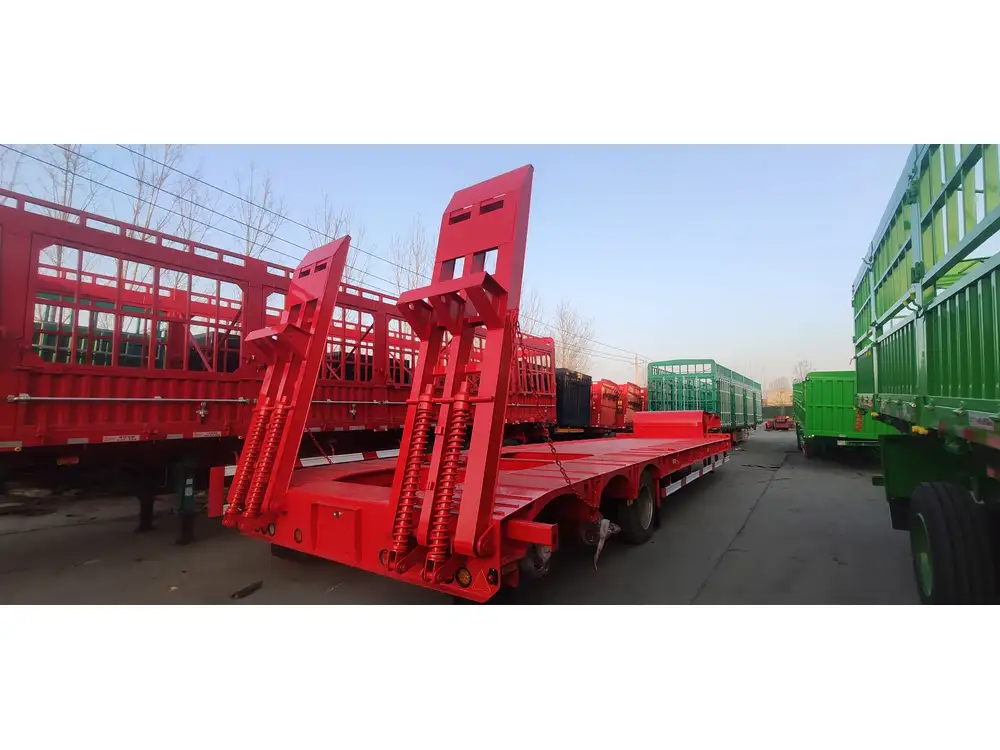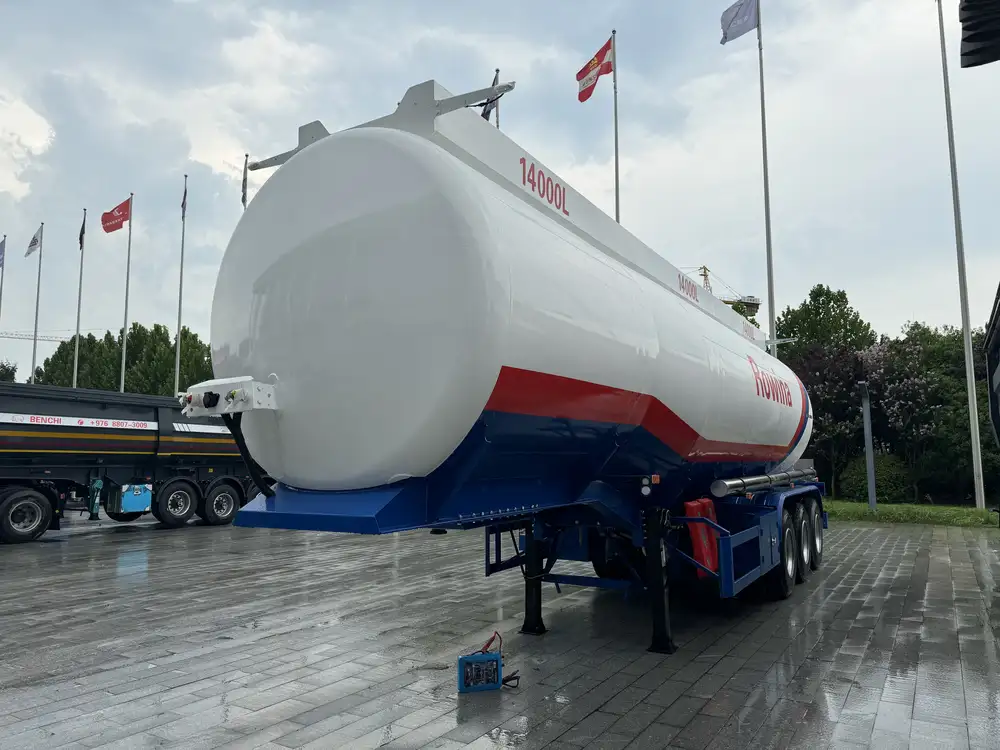When it comes to transport logistics, the specifications of your equipment can be as crucial as the commodities being transported. Among these specifications, the height of open top semi-trailers is a pivotal factor. Knowing how tall an open top semi-trailer is not only essential for loading and unloading cargo but also for navigating under bridges and other overhead constructions. In this detailed exploration, we will dissect the heights of open top semi-trailers, examining standard specifications, variations, loading capabilities, and critical considerations for both manufacturers and users.
What is an Open Top Semi-Trailer?
Open top semi-trailers are specialized trailers used predominantly for transporting tall or bulky cargo that cannot be easily loaded through side doors or that exceeds the maximum height of enclosed trailers. Unlike enclosed trailers, these vehicles typically feature a removable tarp that covers the load, allowing for flexible loading and weather protection. Open top trailers are widely used across various industries, including construction, agriculture, and manufacturing.
Standard Height Measurements
The height of an open top semi-trailer can vary based on design, manufacturer, and specifications. However, industry standards provide a common range:
- Typical Height Range: Open top semi-trailers generally measure between 13.5 and 14 feet (4.1 to 4.3 meters) from the ground to the top of the trailer.
| Aspect | Measurement |
|---|---|
| Standard Trailer Height | 13.5 – 14 feet (4.1 – 4.3 m) |
| Height with Tarp | Up to 15.5 feet (4.7 m) |
| Height without Tarp | 13 feet (4.0 m) |

Factors Affecting Height
Several factors contribute to the varying heights of open top semi-trailers. Understanding these can help transport managers choose the appropriate trailer for their needs.
- Manufacturer Specifications: Different manufacturers have varying designs, affecting the overall height.
- Load Configuration: The type and shape of the cargo can necessitate adjustments in height.
- Tarp System: The design and attachment method of the tarp can increase the overall height.
Compliance with Legal Height Limits
In the United States, the legal height limit for vehicles, including semi-trailers, is generally 13.5 feet (4.1 meters). However, some states allow for heights of up to 14 to 14.5 feet (4.3 to 4.4 meters). It is essential to consult local regulations to avoid fines and ensure compliance during your transportation activities.
Loading Considerations

Maximal Load Capacities
Determining the height is vital for maximizing load capacities. Open top semi-trailers are designed to carry substantial weights, often accommodating loads that can exceed 50,000 pounds (22,680 kg). However, the height at which the load can be safely secured and transported must be evaluated thoroughly to maintain stability.
Cargo Types
When considering the height of open top semi-trailers, recognizing the types of cargo they can handle is essential. Common applications include:
- Construction Materials: Steel beams, pipes, and other large items often require the extra height and open design for easy loading.
- Agricultural Products: Items such as hay bales or farm machinery may also necessitate the use of open top trailers due to their size.
Best Practices for Loading
Here are some best practices to consider when loading cargo into an open top semi-trailer:
- Use Proper Equipment: Cranes or forklifts may be required to lift heavy or oversized loads safely.
- Secure the Load: Utilize appropriate tarping, running straps, or nets to prevent cargo movement during transit.
- Weight Distribution: Ensure even weight distribution to avoid tipping or swaying during transport.

Height Limitations and Transportation Routes
Navigating Bridges and Tunnels
As mentioned earlier, the height of the semi-trailer is critical when planning transportation routes. Many underpasses, bridges, and tunnels have strict height restrictions. Here’s how to navigate this:
- Pre-Trip Planning: Always plan your route ahead of time, checking for overhead clearances along the way.
- Use Height Clearance Apps: Many smartphone applications provide real-time data on clearance levels on your route.
Impact on Fuel Efficiency
The height of the trailer can also affect fuel efficiency. Taller trailers may experience increased drag due to air resistance. This is compelling manufacturers and fleet managers to consider aerodynamic enhancements to minimize fuel consumption in full loads.
| Factor | Impact on Freight Transport |
|---|---|
| Overall Height | Affects route planning |
| Cargo Weight | Impacts fuel efficiency |
| Loading Techniques | Determines load stability |

Innovative Designs in Open Top Semi-Trailers
As the transport industry evolves, manufacturers are continually designing innovative solutions. Here are a few noteworthy advancements:
Adjustable Height Features
Some manufacturers have developed adjustable height options for open top semi-trailers. This feature allows operators to modify the trailer height based on the specific load and route requirements.
Lightweight Materials
The integration of lightweight composite materials in manufacturing designs has led to a reduction in overall trailer weight. As a result, operators can increase their cargo capacity without exceeding weight limits.

Aerodynamic Designs
Newly developed aerodynamic open top semi-trailers help in mitigating drag while maximizing height. Manufacturers are now designing trailers with contoured shapes that reduce wind resistance, improving fuel efficiency without sacrificing height or cargo capacity.
Customization Options
Modern manufacturers are also providing a range of customization options for open top semi-trailers, which allow users to select height configurations, materials, and loading systems suited to their specific needs.
Conclusion: Height Matters in Freight Transport
Understanding the height specifications and considerations of open top semi-trailers is imperative for ensuring efficient and compliant transport operations. The typical height of 13.5 to 14 feet provides flexibility but must be coupled with awareness of regulations, loading practices, and advanced trailer design features.
As manufacturers continue to innovate, the evolving landscape of open top semi-trailer options presents a wealth of possibilities for businesses involved in freight transport. Whether you are a business owner, logistician, or a fleet manager, aligning your operations with these insights guarantees more efficient planning, increased safety, and ultimately, a more optimized transport process.
Investing time to comprehend the intricacies of these trailers will not merely facilitate better routing decisions; it will pave the way for enhanced safety and operational efficiency across all transportation projects, impacting your bottom line positively.



